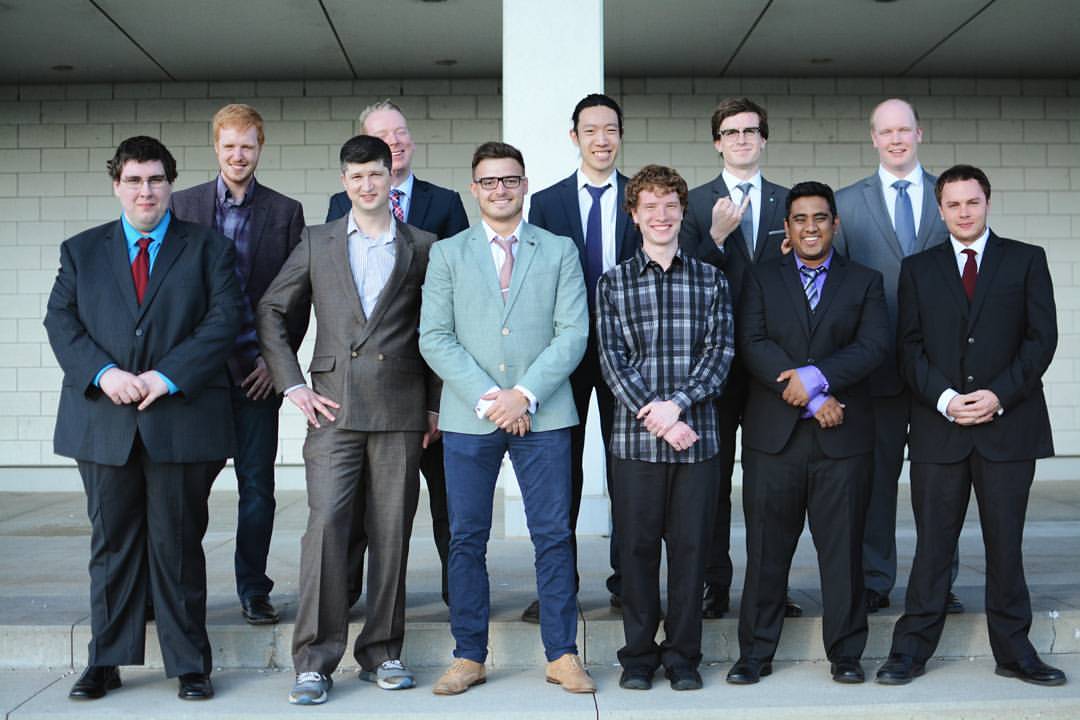Students in Conestoga’s Electronic Systems Engineering program are working together to launch a weather balloon that will reach the edge of space. The project, part of the students’ Assessing Emerging Technologies course, has been in development throughout the term and the team plans to launch the balloon in early August.

Electronic Systems Engineering students are working to launch a weather balloon that will reach the edge of space. The anticipated launch date is August 3.
Faculty member Lev Marder said the liberal studies elective course has been more research-based in the past, but worked with students this term to adopt an experiential learning experience. “To make this happen in four months, the students have dedicated hundreds of hours and lots of enthusiasm to the project,” said Marder. “The balloon will be a first step for us, but students in the course next term can take what we learn during this first attempt and build on it. Through the project the students will also consider the social and political potential and implications of such technology becoming more widely available to the public, for example, with surveillance or humanitarian missions.”
The students have been divided into four teams with specific responsibilities. Designers are handling the construction of the balloon, a tracking team will follow and retrieve it, a third team has been assessing safety issues and government regulations, and the social team interacts with the public and shares behind-the-scenes planning of the project.
“As engineers, we tend to look at the end product and focus on the development of it, but this weather balloon gives us exposure to all aspects of product development,” said student Loren Copeland. “We’re seeing it through from start to finish and will benefit from having to look at the whole picture.”
The course gives students a hands-on approach to assessing emerging technologies as they deal with many of the challenges -- including the risks, marketing, governmental regulations, comparisons with existing and historical innovations -- that developers of new technologies face.
The group said it has been most challenged by the aspects of the project they have the least familiarity with: marketing, assessing regulations and safety aspects, and acquiring resources and funders for the project. The mission requires a camera, tracking system and a buoyancy and landing system, so the team has established a presence on Facebook and a public funding page to help promote interest.
The proposed launch date is August 3, but will depend largely on wind and weather patterns. By tracking and analyzing weather data, the team will predict the path the balloon will take and its expected landing point. Failure to predict the flight path means the balloon may not be retrievable.
“There’s some risk involved,” said student Josh Osborne. “We need to get the flight path right, and we need to make sure our camera, GPS and battery don’t fail.”
The students plan to edit video footage of the mission to share publicly.
Conestoga’s Bachelor of Engineering - Electronic Systems Engineering program, delivered at the honours level, is accredited by the Canadian Engineering Accreditation Board allowing students to start on the path to becoming a professional engineer. It is a unique project-based co-op program that allows students to apply the high level of theory they learn to interesting, real-world projects. It is geared to motivated individuals looking for challenging careers in the dynamic and fast-paced world of digital and analog electronics, embedded systems, software, and communications.
For more information, visit the program page
